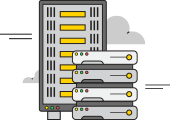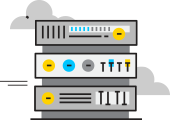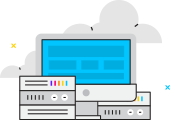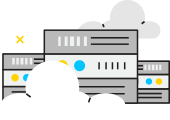Object code is a sequence of statements or instructions in machine language, or a code format that a computer’s CPU (central processing unit) can execute directly. The object code typically comes from the compilation of a higher-level programming language, making it a vital step in the programming and execution process.
The History of Object Code and Its First Mention
Object code’s origin traces back to the early days of computing. The first mention of object code is attributed to the era of the first programmable computers in the 1940s and 1950s. At this time, assembly language and machine code programming were developed to create more efficient ways of instructing computer hardware.
Detailed Information About Object Code: Expanding the Topic
Object code is generated through a process called compiling, where source code written in a high-level programming language is translated into machine code. This machine code, or object code, is then linked with other object code files and libraries to create an executable file.
Components of Object Code
- Machine Code: Instructions that can be executed directly by the CPU.
- Data Sections: Representations of constants and variables.
- Relocation Information: Helps in adjusting addresses during the linking process.
- Debugging Information: Aids in diagnosing errors in the code.
The Internal Structure of Object Code: How Object Code Works
The internal structure of object code consists of several parts:
- Header: Contains meta-information, such as the size, architecture, and version.
- Text Segment: Contains the actual machine code instructions.
- Data Segment: Stores global and static variables.
- BSS Segment: Holds uninitialized data.
- Symbol Table: Used for linking and debugging purposes.
- Relocation Table: Assists in modifying addresses at link time.
Analysis of the Key Features of Object Code
- Portability: Depends on the CPU architecture; typically not portable across different architectures.
- Efficiency: Executed directly by the CPU, making it highly efficient.
- Readability: Difficult for humans to read, unlike the source code.
- Debugging: Challenging to debug without proper tools.
Types of Object Code: Use Tables and Lists
There are mainly two types of object code:
-
Relocatable Object Code:
- Can be combined with other relocatable object codes during the linking stage.
- Used for creating libraries and modular programs.
-
Absolute Object Code:
- Directly executable by the CPU.
- Cannot be combined with other object code.
Ways to Use Object Code, Problems, and Solutions
Ways to Use:
- Executing programs
- Building software libraries
Problems:
- Compatibility issues across different platforms
- Difficulties in debugging
Solutions:
- Using cross-compilers for different platforms
- Utilizing specialized debugging tools
Main Characteristics and Comparisons in Tables and Lists
| Characteristic | Object Code | Source Code |
|---|---|---|
| Readability | Low | High |
| Portability | Low | Moderate |
| Efficiency | High | Moderate |
Perspectives and Technologies of the Future Related to Object Code
The future of object code aligns with the development of new processor architectures, more efficient compilers, and innovations in debugging and performance optimization tools.
How Proxy Servers Can Be Used or Associated with Object Code
Proxy servers like those provided by OneProxy can interact with object code by routing traffic and requests to different executable applications. By providing an additional layer of control and security, proxy servers play a role in the management and execution of object code.
Related Links
The understanding and utilization of object code are fundamental to software development, execution, and management. Whether as a programmer or as a provider of services like proxy servers, a robust knowledge of object code can contribute to more efficient and secure operations.




